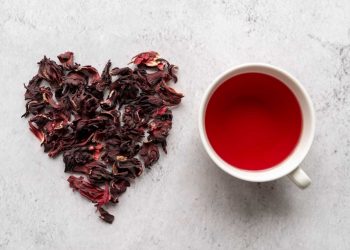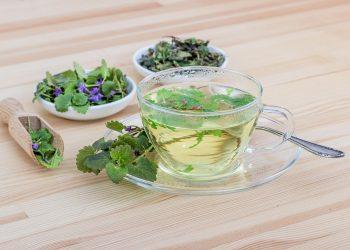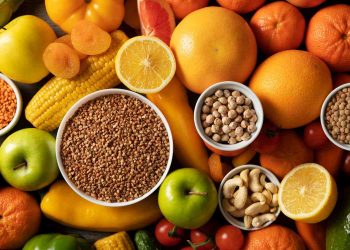Did you know that your morning cup of coffee or green tea could do more than just wake you up? It might actually help you achieve that flatter belly you’ve been dreaming of. Yes, you read that right! These beloved beverages are packed with compounds that can aid in weight management and bloating reduction. But how do they work? Let’s dive into some practical hacks that can transform your daily routine with these drinks into belly-flattening strategies.
Contents
1. Start Your Day with a Coffee Kick
The Science Behind It
Coffee is more than just a delicious wake-up call; it’s also a metabolism booster. Research shows that caffeine can increase your metabolic rate, leading to more calories burned throughout the day (Acheson et al., 2004). This can be particularly beneficial if you’re looking to shed some pounds.
The Hack
Instead of reaching for sugary creamers or flavored syrups, try drinking your coffee black or with a splash of almond milk. Not only does this cut down on unnecessary calories, but it also allows the beneficial compounds in coffee to shine through. If you find black coffee too bitter, consider adding a sprinkle of cinnamon. Not only does it add flavor, but cinnamon can also help stabilize blood sugar levels, which is crucial for weight management.
Pros and Cons
- Pros: Boosts metabolism, low-calorie option, stabilizes blood sugar.
- Cons: Can cause jitters or digestive issues for some people, especially if consumed in excess.
2. Green Tea for a Hydration Boost
The Science Behind It
Green tea is rich in catechins, particularly epigallocatechin gallate (EGCG), which has been shown to aid in fat oxidation and improve metabolic rates (Hursel et al., 2011). Plus, it’s hydrating and can help you feel fuller longer, reducing the chances of snacking.
The Hack
Swap your afternoon coffee for a cup of green tea. Not only will you be reducing your caffeine intake, but you’ll also benefit from the antioxidants in green tea. To amplify its effects, try drinking it hot or cold, depending on your preference, and consider adding a slice of lemon. The vitamin C in lemon can enhance the absorption of catechins, making your tea even more effective.
Pros and Cons
- Pros: Rich in antioxidants, aids in fat oxidation, hydrating.
- Cons: May cause stomach upset in some people; caffeine content can still be a concern for those sensitive to it.
3. Intermittent Fasting with Your Favorite Brews
The Science Behind It
Intermittent fasting (IF) is a popular approach that cycles between eating and fasting periods. Both coffee and green tea are low-calorie beverages that can be consumed during fasting periods without breaking your fast. Studies suggest that IF can help reduce body fat and improve metabolic health (Varady, 2011).
The Hack
Incorporate your coffee or green tea into your fasting routine. For example, if you’re following a 16:8 fasting schedule, enjoy your coffee in the morning and green tea in the afternoon. Just remember, avoid adding sugar or cream, as that can break your fast.
Pros and Cons
- Pros: Can boost fat loss, easy to incorporate, keeps you hydrated.
- Cons: Not suitable for everyone; can lead to headaches or irritability if you’re not used to fasting.
4. Coffee Scrubs for Bloating Relief
The Science Behind It
Did you know that coffee can be used topically? It’s not just a beverage; coffee grounds can also help reduce the appearance of cellulite and bloating when used in scrubs. The caffeine acts as a diuretic, helping to flush out excess water from your system.
The Hack
Make a simple coffee scrub by mixing used coffee grounds with coconut oil and a bit of sugar. Massage it onto your belly in circular motions for about 5-10 minutes before rinsing off. The exfoliation, combined with the caffeine, can help rejuvenate your skin and reduce bloating.
Pros and Cons
- Pros: Natural exfoliant, may reduce the appearance of cellulite, can be soothing.
- Cons: Can be messy, and not everyone may see significant results.
5. Experiment with Iced Green Tea Lattes
The Science Behind It
Iced green tea lattes are a refreshing way to enjoy the benefits of green tea while keeping your calorie intake low. The combination of matcha (powdered green tea) and milk (dairy or plant-based) offers a creamy texture without the added sugars.
The Hack
Prepare an iced green tea latte by whisking together matcha powder with a little hot water to dissolve it, then pour it over ice and top it with your choice of milk. For added flavor, consider sweetening it with a dash of honey or a sprinkle of vanilla extract. This drink not only tastes great but also keeps you hydrated and energized.
Pros and Cons
- Pros: Refreshing, easy to make, packed with antioxidants.
- Cons: Matcha can be expensive, and some people find it an acquired taste.
FAQs
1. Can I drink coffee and green tea together?
Yes, you can! Both beverages have unique benefits, but be mindful of your overall caffeine intake. Mixing them might give you an extra boost, but moderation is key.
2. How much coffee or green tea should I consume daily?
It’s generally recommended to limit caffeine intake to about 400 mg per day, which is roughly equivalent to four 8-ounce cups of brewed coffee or 10 cups of green tea. However, individual tolerance can vary.
3. Will these hacks work for everyone?
Not necessarily. Everyone’s body responds differently to dietary changes. It’s essential to listen to your body and consult with a healthcare provider if you have concerns.
4. Can I add sugar to my coffee or green tea?
While it’s best to avoid added sugars for optimal benefits, if you must sweeten your drinks, consider natural sweeteners like stevia or a small amount of honey.
Conclusion
Incorporating coffee and green tea into your daily routine can be a delightful and effective way to work towards a flatter belly. Whether you’re sipping on a black coffee, enjoying a refreshing green tea, or even indulging in a DIY coffee scrub, these hacks offer a blend of flavor and health benefits. Remember, though, that lifestyle changes take time, and it’s essential to combine these hacks with a balanced diet and regular exercise for the best results. So, why not give it a try? Your belly might just thank you!
Disclaimer: This article is for educational purposes only and is not a substitute for professional medical advice. Always consult a qualified healthcare provider before making changes to your health routine.
References
-
Acheson, K. J., Gremaud, G., Meirim, I., et al. (2004). Metabolic effects of caffeine in humans: lipid oxidation or fat storage? International Journal of Obesity, 28(2), 200-207. https://doi.org/10.1038/sj.ijo.0802565
-
Hursel, R., Viechtbauer, W., & Westerterp-Plantenga, M. S. (2011). The effects of green tea on weight loss and weight maintenance: a meta-analysis. International Journal of Obesity, 35(5), 759-769. https://doi.org/10.1038/ijo.2010.171
-
Varady, K. A. (2011). Intermittent versus continuous calorie restriction: which diet regimen is more effective for weight loss? Obesity Reviews, 12(7), e593-e601. https://doi.org/10.1111/j.1467-789X.2010.00840.x
Get Your FREE Natural Health Guide!
Subscribe now and receive our exclusive ebook packed with natural health tips, practical wellness advice, and easy lifestyle changes — delivered straight to your inbox.















